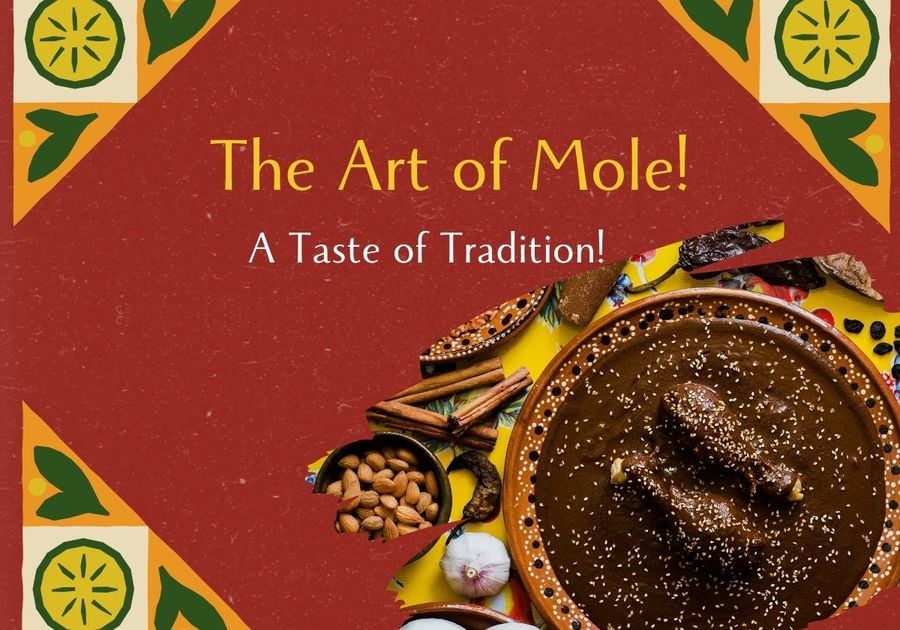The Art of Mole: A Taste of Tradition
Mole sauce is one of the most iconic dishes in Mexican cuisine, celebrated for its depth of flavor, cultural significance, and the care that goes into its preparation. It’s more than just a sauce; it’s a symbol of tradition, family, and a beautiful fusion of ingredients.
What Is Mole?
The word “mole” comes from the Nahuatl word mōlli, which means "sauce" or "mixture." And it’s exactly that—a complex blend of ingredients, often including various types of dried chilies, nuts, spices, fruits, and sometimes even chocolate! While there are numerous variations, the key is balance: combining sweet, savory, spicy, and earthy flavors to create something truly unique.
A Brief History of Mole
Mole’s origins are rooted in pre-Hispanic Mexico, where indigenous communities created rich, flavorful sauces for ceremonies and important occasions. Over time, Spanish and African culinary influences merged with indigenous techniques, adding new ingredients and flavors. This fusion led to the diverse types of mole we have today, from the well-known mole poblano (rich with chocolate and chilies) to mole verde (a green, herb-forward sauce), and the famous mole negro of Oaxaca, known for its dark, smoky profile.
The Ingredients That Make Mole
Mole ingredients vary by region and family recipe, but many moles contain these elements:
- Dried Chilies: Ancho, pasilla, and guajillo chilies give mole its complex heat and depth.
- Nuts and Seeds: Almonds, sesame seeds, and peanuts add a rich, creamy texture.
- Spices: Cumin, cinnamon, and cloves bring warmth to the sauce.
- Fruit: Raisins, plantains, and even prunes are often used to add sweetness.
- Chocolate: Not all moles include chocolate, but when it does, it adds a subtle bitterness and rounds out the sauce.
Preparing Mole: A Labor of Love
Making mole is a time-intensive process, often involving toasting and grinding ingredients individually, then simmering them together to blend the flavors. Traditionally, families come together to prepare mole for holidays, weddings, or religious celebrations. The process can take hours or even days, with each family having its own secret touches and variations.
In Modesto, you can find mole at local Mexican restaurants and grocery stores, but making it at home is an experience worth trying! Here’s a simple way to get started:
Quick Mole Recipe
Here’s a basic recipe to try at home. It’s simplified for ease but retains the essence of traditional mole.
Ingredients:
- 3 dried ancho chilies, seeded
- 3 dried guajillo chilies, seeded
- 1/2 cup toasted sesame seeds
- 1/4 cup peanuts
- 1/2 teaspoon ground cinnamon
- 1/4 teaspoon ground cloves
- 1/4 teaspoon ground cumin
- 1 small onion, chopped
- 3 cloves garlic, minced
- 1 ripe tomato, chopped
- 1 ounce dark chocolate, chopped
- 2 cups chicken broth
- Salt to taste
Instructions:
- Toast the chilies in a skillet until fragrant, then soak them in hot water for 15 minutes to soften.
- In a blender, combine chilies, sesame seeds, peanuts, cinnamon, cloves, cumin, onion, garlic, and tomato. Blend until smooth.
- Transfer mixture to a saucepan, add chicken broth, and bring to a simmer. Cook for 20 minutes, stirring occasionally.
- Add chocolate and stir until melted. Season with salt and cook until sauce thickens.
- Serve over chicken, rice, or enchiladas, and enjoy!
Mole in the Community
Exploring mole is a delicious way to introduce kids to Mexican culture. As they taste different types of mole, they’ll begin to appreciate the artistry and tradition behind each bite. Families in the Modesto area can also enjoy mole at local cultural events and family-owned restaurants.
So the next time you enjoy mole, remember that each spoonful holds a rich history, blending the flavors of Mexico’s past and present.
This article was crafted with the help of ChatGPT.
 |  |  |



